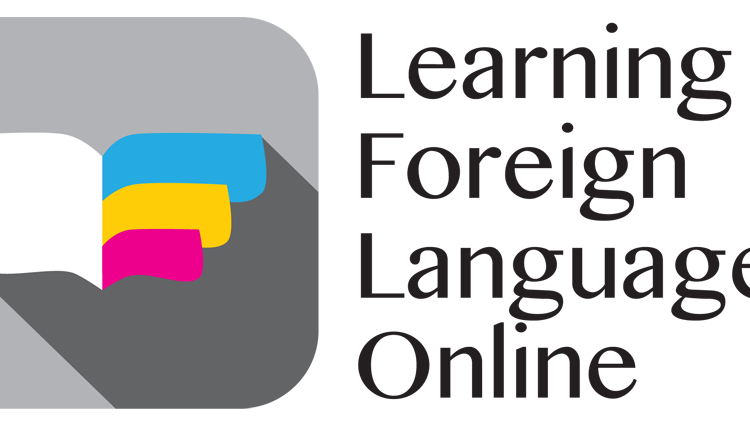Self-directed language learning has changed as a result of the use of digital technology, and there are now countless online tools and spaces with great learning potential. A framework for evaluating communicative proficiency in foreign languages, the Common European Framework of References for Languages (CEFR), was created in 2001 and strongly emphasises “using a language for independent communication” (Mc Dermott., 2013). Information technologies, particularly social media, have recently had an impact on everyone’s daily lives in general and the academic community in particular (Slim & Hafedh, 2019). It is because of their numerous formats, which enable individuals to interact in a variety of ways, including blogs, social networks such as Facebook, Instagram, microblogs such as Twitter, wikis such as Wikipedia, video podcasts, and photo-sharing apps such as Snapchat. Applications like YouTube, Facebook, Twitter, and WhatsApp have significantly increased social engagement and information sharing in communities of both students and teachers.
Learners are motivated by the use of educational technology because it promotes independent learning, engagement, and cooperation, and it can readily accommodate multiple learning styles. Language acquisition is essentially social and interactive, according to recent studies, hence this strategy improves learning. Social media brings dynamic fulfilment to learning a language. And when something doesn’t seem like laborious task, we tend to exert a little bit more while appearing to exert less. You can interact with others, both native speakers and other learners who are learning the same language as you. Furthermore, consider the fact that you can complete this task entirely from home!
Electronic devices and social media give learners the chance to engage in collaborative learning and give them the option to share resources with peers (Gikas & Grant, 2013). Utilising social media and mobile devices has benefits and drawbacks, with the advantages mostly being found in the ease of access to course materials, videos, and the transfer of lesson plans, among other things. Overall, students believe that social media and mobile devices are the most accessible and affordable means of learning about current topics. Studies conducted in western nations have revealed that the use of online social media for collaborative learning significantly affects students’ academic success and satisfaction (Zhu, 2012). According to Dhanya (2016) and Namaziandost and Nasri’s (2019) study, learners can improve their language abilities thanks to the variety of opportunities provided by social media. Additionally, social media enables students to engage in an ongoing, relevant dialogue on these social networking sites, which the researchers argue enhances language production and lowers anxiety.
Because of its multimodal, multilingual, and multipurpose nature, today’s online resources and venues present students with an almost overwhelming array of options (Gómez-Parra, M. E., & Huertas-Abril, 2020). To use the online resources that best suit their needs in this situation, whether in terms of level or skill, autonomous language learners need to acquire a number of new abilities. Digital competence, understanding how to learn, motivation, responsibility, and tenacity are among the abilities that are unquestionably important. However, converting these online materials into practical and beneficial language learning environments is a challenging endeavour, particularly when learners are entirely independent (as in the case of language learning through free-access websites or OERs). To resolve this the autonomous learner must have digital literacy and must develop strategies to utilise social media to increase their autonomy. Following tips and strategies an autonomous learner can adopt during their language learning journey:
- It’s an excellent environment to connect and interact with language learners if you’re devoted to meeting them.
- Additionally, there are multilingual general language learner groups available. You may find a number of groups to pick from in almost any language if you use the Facebook search box to browse for language study groups.
- The purpose is to socialise oneself into learning. It makes no difference where you hang your hat as long as you get to know your new acquaintances.
Youtube
- For language learners, YouTube is a veritable golden trove of social media. Use hashtags associated with the language you want to study to make the most of what is offered.
- These channels might be useful, for instance, if you’re learning German. Seeking recommendations about where to obtain French videos? You are also protected here. Not to worry!
- Reading “tweets” on Twitter in another language can be entertaining and helpful for learning. There is no need to overthink things, and the appeal of casually exchanging information is present.
- The language learning app and programme Duolingo also has a Twitter account. They share amusing nuggets and trivia about numerous languages.
Change the System-Level Language on Your Phone
- The majority of us operate our phones rather intuitively, and we can quickly choose between several alternatives (Khan, 2022).
- Change the language on your device to the one you want to study. It’s simple: Select [Your Target Language] under Settings > General > Language and Region > Device Language.
- Even if it might be a little more complicated, you can still use your phone in a different language if you have a fundamental understanding of how it works.
- Transform this passive knowledge into an active learning opportunity.
- It might say, for instance:
Configuration > General > Idioma y región > Idioma del iPhone > [Tu idioma preferida]
To put it simply, you can use social media and our everyday technology to learn a language without having to change your environment.
- Finally, do not be timid.
- Participate in discussions by joining these channels.
- It’s not always simple, but keep in mind that you probably won’t ever meet these folks in person, and even if you do, they’re probably too busy worrying about their impression of them to care if you make a mistake!
- Don’t be scared to make mistakes or to ask inquiries.
- Everyone is learning together, and the person who is correcting your error once made a mistake that is identical to the one you are correcting now.
Remember that and just take pleasure in the interpersonal benefits of language exchange!
Resources:
- Cai, S., & Zhu, W. (2012). The impact of an online learning community project on university Chinese as a foreign language students’ motivation. Foreign Language Annals, 45(3), 307-329.
- Dhanya, G. (2016). Influence of social media on English language learning. Journal of English Language and Literature (JOELL), 3(1), 105-110.
- Gikas, J., & Grant, M. M. (2013). Mobile computing devices in higher education: Student perspectives on learning with cellphones, smartphones & social media. The Internet and Higher Education, 19, 18-26.
- Gómez-Parra, M. E., & Huertas-Abril, C. A. (2020). Social Media Support and the Need of Counselling From Experts in Autonomous Language Learning: Challenges and Strategies for the 21st Century. In International Approaches to Bridging the Language Gap (pp. 135-150). IGI Global.
- Mc Dermott, G. (2013). The role of social media in foreign language teaching: A case study for French. Recherche et pratiques pédagogiques en langues de spécialité. Cahiers de l’Apliut, 32(2), 141-157.
- Maria, A. (2021). Social Media Language Learning Tips You’ll Want to Like and Share Again and Again! FluentU. Available at: Social Media Language Learning Tips You’ll Want to Like and Share Again and Again! | FluentU Language Learning
- Namaziandost, E., & Nasri, M. (2019). The impact of social media on EFL learners’ speaking skill: a survey study involving EFL teachers and students. Journal of Applied Linguistics and Language Research, 6(3), 199-215.
- Slim, H., & Hafedh, M. (2019). Social media impact on language learning for specific purposes: A study in English for business administration. Teaching english with technology, 19(1), 56-71.
- Khan, S. (2022). How to leverage social media for language learning. EdTechReview, Available at: How To Leverage Social Media For Language Learning (edtechreview.in)

